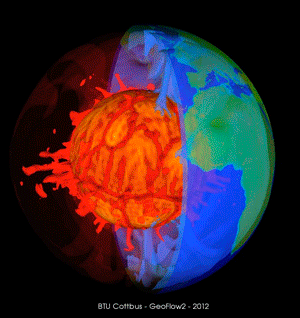
After 13 months of continuous operations and more than 260 GB of science data generated, science campaign for GeoFlow-2 can be considered a huge success, overpassing all expectative and giving more results than initially expected. GeoFlow-2 objective was to generate further results to check and improve numeric models of the Earth mantle. That information complements the results obtained by geological phenomena numeric simulators, confirming or ameliorating their conclusions.
The experiment has investigated the flow of an incompressible viscous fluid (alkanol 1-Nonanol) held between two concentric spheres. A central force field was introduced by applying a high voltage difference between the two spheres. Maintaining the inner sphere at a higher temperature to the outer sphere also created a temperature gradient from inside to outside. Finally both spheres rotated at up to 2Hz. This geometrical configuration can be seen as a representation of the Earth, where the role of gravity is played by the central electric field; nevertheless the unidirectional term due to real gravity had to be eliminated, being that the main reason why microgravity was fundamental for this experiment.
Understanding and controlling fluid flow in a spherical geometry under the influence of rotation will also be useful in a variety of engineering applications, such as improving spherical gyroscopes and bearings, and centrifugal pumps. Furthermore, study of effects, which serve to simulate the central gravity field, will find applications in areas such as high-performance heat exchangers and in the study of electroviscous phenomena. It will also help to understand the motion of liquids in several ground-based industrial applications where injected ions are a source of charge, e.g. in electrostatic precipitators and ion-drag pumps.
GeoFlow-2, as its predecessor, works inside the Fluid Science Laboratory onboard Columbus. GeoFlow-2 operations, performed by the E-USOC in collaboration with MARS (Microgravity Advanced Research and Support Centre), ended in May 2012, and are expected to be resumed under the name of GeoFlow-2B before 2013.
More information:

